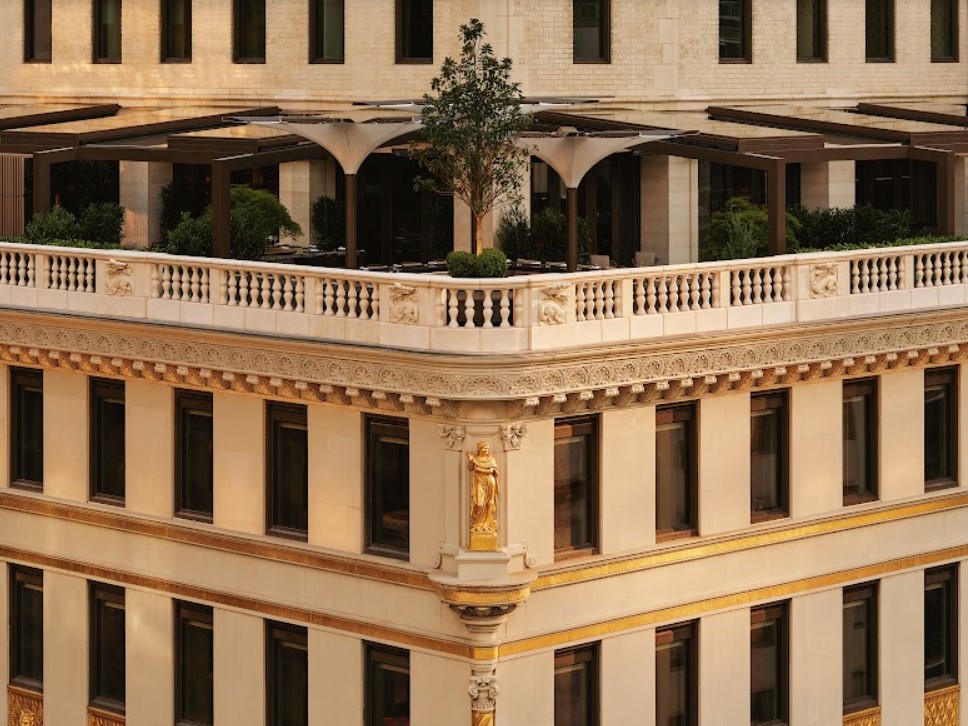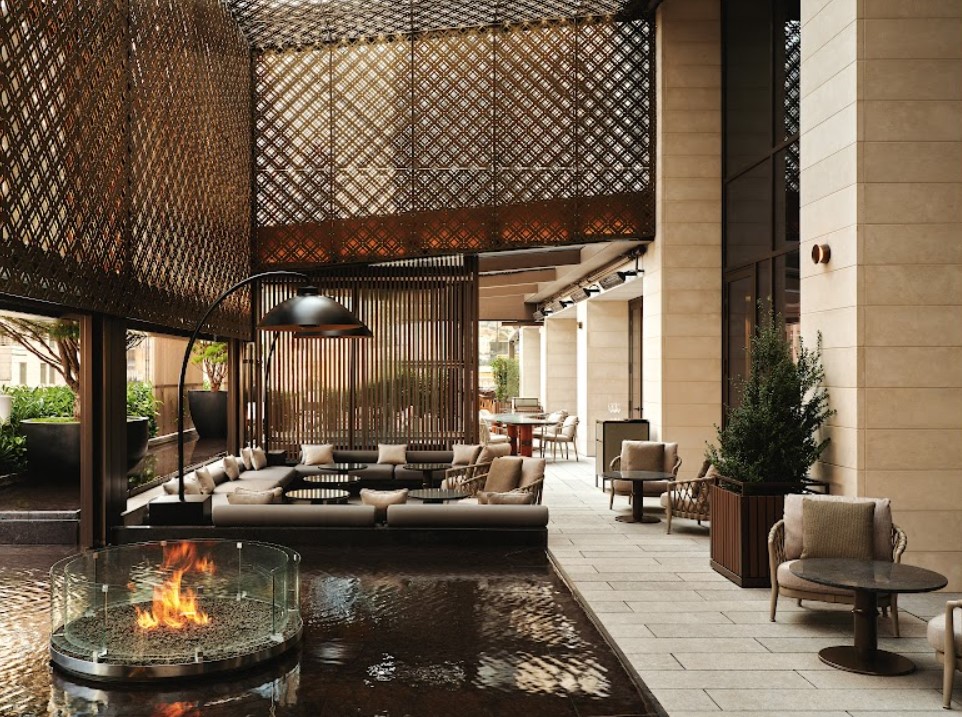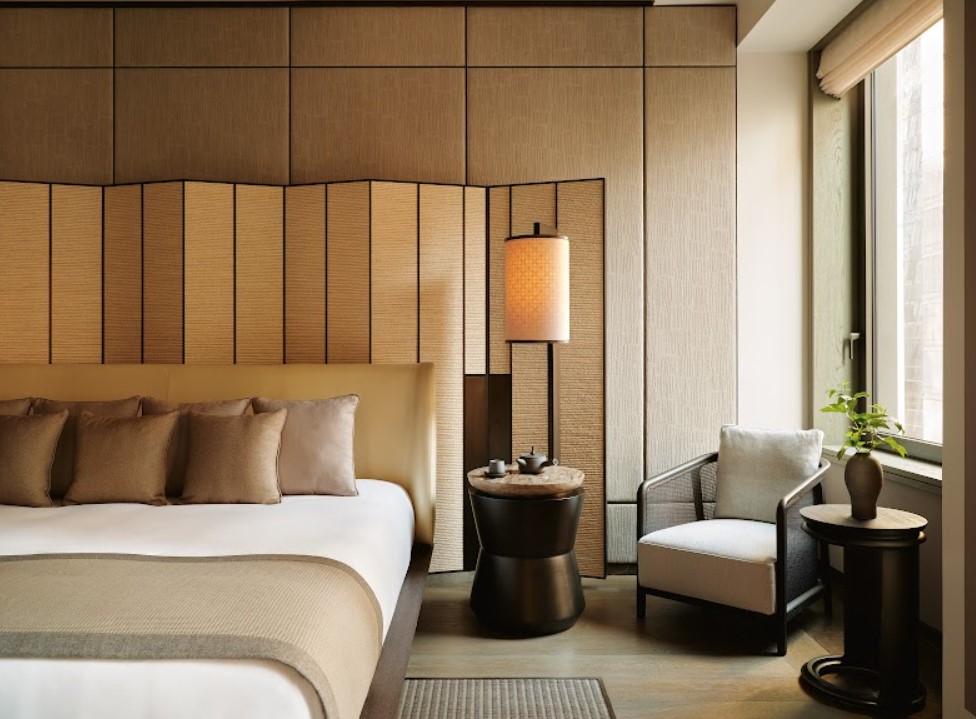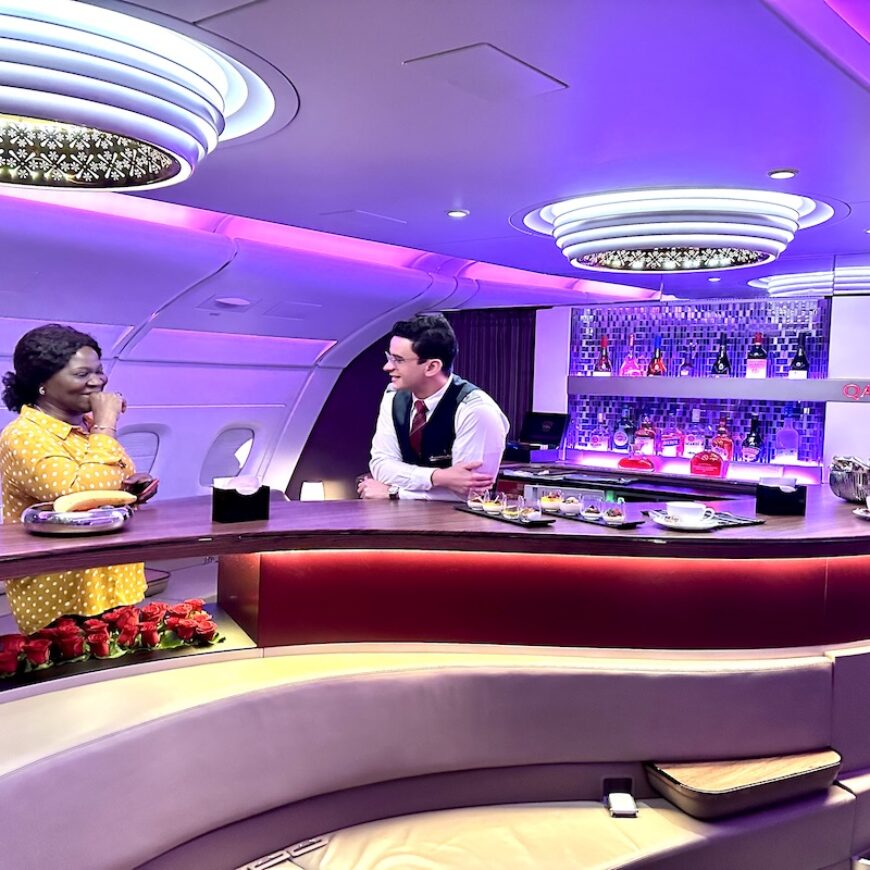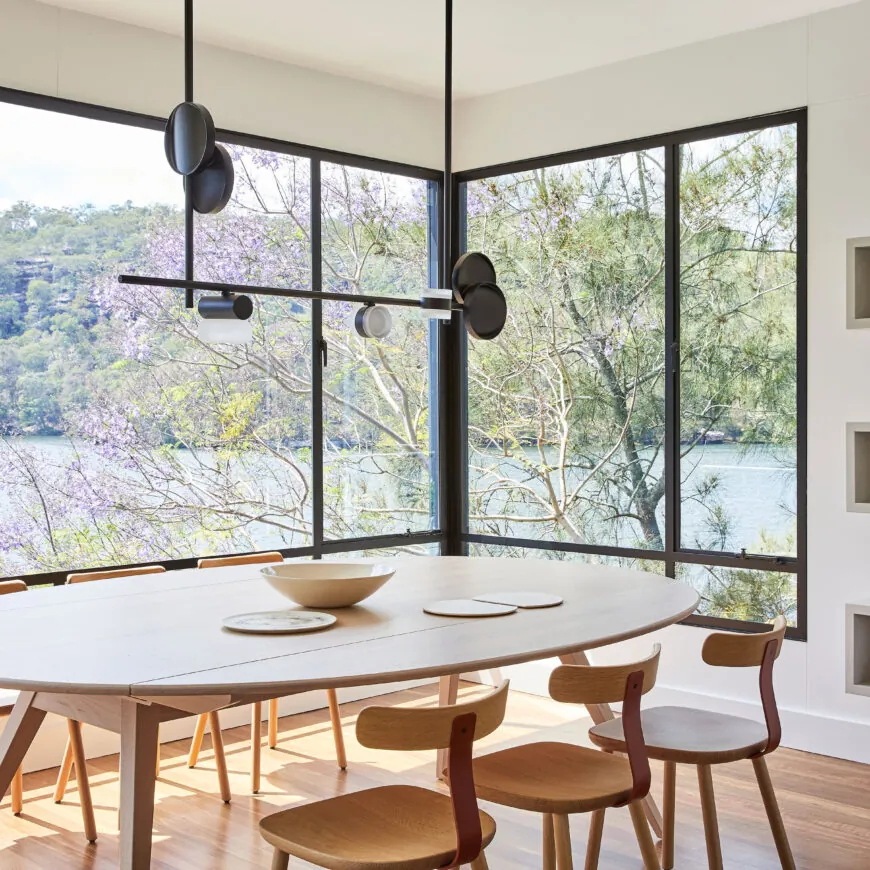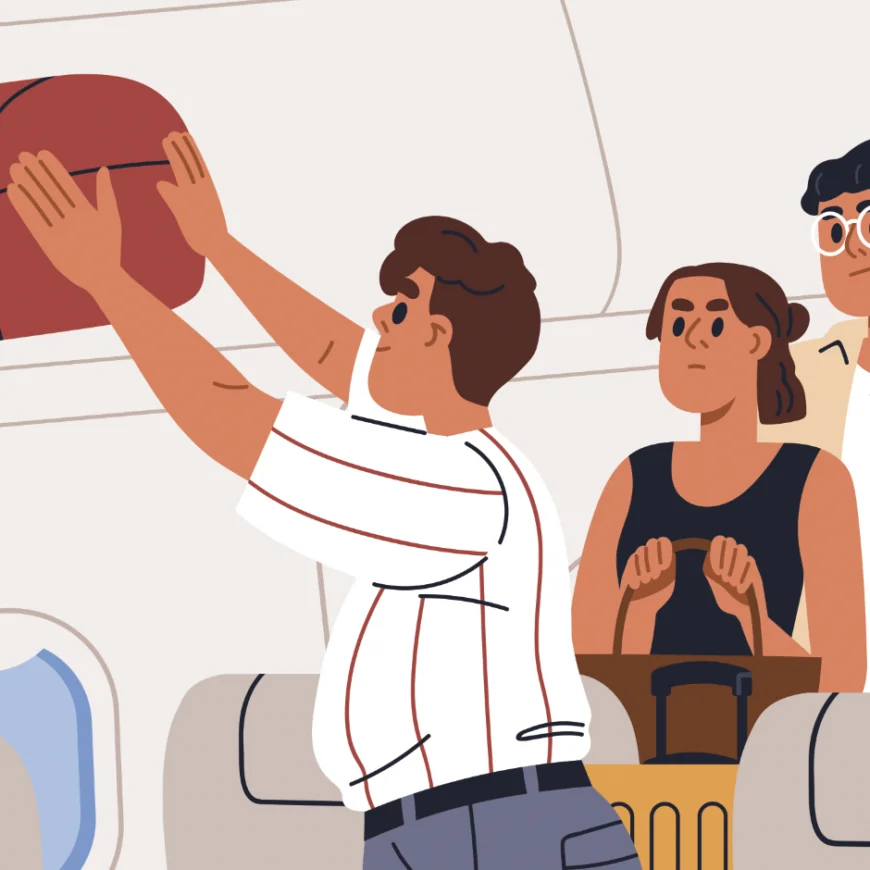New York’s most expensive new hotel gives solace to the well-heeled at the Aman New York. But Jonathan Thompson asks: is it worth $4,700 a night?
The first thing you notice when entering the most extraordinary – and most expensive – new hotel in New York is the noise; or, rather, the lack thereof.
One minute you’re on frenetic 5th Avenue, strolling past the iconic glass Apple store and the bright lights of Bergdorf Goodman, deep in the thump and hustle of Midtown Manhattan; the next you’ve been spirited up to an airy 14th-floor atrium, where sunlight floods through grand, sound-proofed French doors, a fireplace flickers at the centre of a lofty, marble-colonnaded lounge and you can almost touch the tranquillity – and with suites starting currently starting at US$3,000 a night, you’d want to.
We’re just two blocks south of Central Park, in what is arguably the busiest corner of the world’s busiest city, and yet there is absolutely no evidence of the human carnival streaming along those streets and pavements a few storeys below. No humming engines, no honking horns; not even a distant screaming siren.
Luxury comes in many forms. There’s the luxury of opulence, for example, or the luxury of excess. But here at the long-awaited, much-hyped Aman New York, that US$3,000-plus buys you the luxury of serenity and space – both at a premium in this city.
The Aman brand – beloved of celebrities from Leonardo DiCaprio to the Kardashians – is better known for its remote, ultra-luxe tropical resorts, such as Amanpuri, on the island of Phuket in Thailand, or Amanpulo, on a private atoll in the Philippines. Aman New York – which the company’s website archly describes as its “newest island destination” – is its first urban hotel in the US, and only its second in the world, after Tokyo (it doesn’t count Venice, apparently). It’s also a major gamble – one to the tune of a reported US$1.45 billion (AU$2.23 billion), including buying the building and adding residences.
The setting for this ambitious metropolitan sanctuary is the iconic Crown Building: a gold-accented, beaux-arts skyscraper at the corner of 5th Avenue and 57th Street, right on the edge of Billionaires’ Row. And the man chosen to marry Manhattan’s pandemonium with the quietude of Aman is the high-end hotel designer Jean-Michel Gathy, the virtuoso behind some of the world’s most impressive properties, including the St Regis Lhasa in Tibet and the Setai Miami Beach.
“Blending the fast-moving life and energy of New York with the Aman DNA requires certain tricks,” the Malaysian-based architect tells me. “One of the best ways is acoustics. Whatever element was at our disposal – types of windows, frames, panelling and layering – we used it all.”
It seems to have worked. From one of the soaring windows in my tenth-floor room (ceilings throughout the hotel are 11 feet or 3.35 metres high, a rarity for New York), Midtown resembles a silent movie (albeit one sponsored by Louis Vuitton and Chanel, with a cameo from Trump Tower). The soundproofing and the cloud-like bed behind me are likely to give the lie to the “City That Never Sleeps” moniker.
From here Central Park is just a few seconds’ walk, while the Museum of Modern Art is four blocks south, with the Rockefeller Center and Radio City Music Hall just beyond; continue through the Diamond and Theater districts, and you’re suddenly in Times Square – the Aman’s perch is pretty unbeatable.
If the hotel’s pricey location is ambitious, so too is its layout. All 83 rooms are suites, with the smallest a whopping 775 sq ft (72 sq m) – quite some feat in Manhattan, where 300 sq ft (28 sq m) is the norm; the smallest rooms at nearby ultra-luxe properties the Carlyle and the Ritz-Carlton are 360 sq ft (33 sq m) and 425 sq ft (39 sq m), respectively.
The suites are open-plan and uncluttered, with pivoting Japanese-style shoji screens so that guests can create privacy around the bed or the free-standing tub. In another nod to the company’s Asian roots, each room also includes a giant mural printed on rice paper and inspired by Pine Trees, a masterpiece by the 16th-century painter Hasegawa Tohaku.
Extreme pampering is at the heart of the Aman group’s ethos (its name means “peace” in Sanskrit), and this new property is no exception; an enormous spa and wellness centre is spread over three floors, centred on a 20-metre indoor pool with glass fireplaces and day beds. Even more impressive, however, are the two spa houses (essentially, spas within a spa) – each has a double treatment room, marble steam room or sauna and private alfresco terrace with plunge pool. These can only be rented by guests or Aman members who want to feel like New York royalty for the day (being actual royalty would help – membership is a cool US$200,000), but they seriously up the ante on the tired spas at neighbouring grandes dames the Mandarin Oriental, the Plaza and the Peninsula.
The food is similarly indulgent, particularly at the Italian restaurant Arva, where dishes are as cucina del raccolto rustic as Aman food ever will be. The menu is light on choice, but standouts include an exquisite tagliatelle with goat’s cheese, morel and chanterelle mushrooms, and an otherworldly beef fillet served with radicchio and Amarone sauce – and it’s surprisingly affordable, with mains from about AU$40. As with Nama, the hotel’s Japanese restaurant, Arva will at some point open to the public.
The Italian restaurant opens onto the expansive 14th-floor garden terrace, with its dramatic firepits that appear to dance on a series of reflective pools. Rooftop patios such as this are bona fide unicorns in Manhattan – it’s certain to be one of the most sought-after spots in town when it finally opens, on a reservation-only basis, to outside guests.
The terrace is itself a triumph of architecture, with a retractable glass roof ready to combat the vicissitudes of New York winters, while ingenious bronze lattice walls mean that diners and drinkers may gaze out towards Central Park, but those in neighbouring skyscrapers cannot see in.
Perhaps the best bit hides beneath the Crown, though. In its basement, the hotel’s slick, Prohibition-style Jazz Club – part-recording studio, part-concert venue – pays testament to Aman’s deep pockets and still-deeper ambition. During my visit, I’m treated to a show by the singer and trumpeter Brian Newman, Lady Gaga’s charismatic band leader and frequent collaborator, who will be a regular performer here.
“This is a venue built by musicians for musicians, and the sound is incredible,” Newman says afterwards over a cocktail. “You have the attributes of a grand venue like Radio City Music Hall or Jazz at Lincoln Center, but in an incredibly intimate space. It’s the best nightspot that’s opened in the city in a long time – a genuine game-changer.” The club will be open to the public, with reservations only but no cover charge.
Back among that lofty garden terrace’s bonsai trees and ornamental pools, with the sun slipping down 5th Avenue far beneath me, I begin to feel as though I am on an island retreat – only a vertical resort, rather than a horizontal one, as Gathy describes it. New York has never felt so tranquil.
And it’s a sought-after feeling in this city, hence the elite price tag. It’s easily the most expensive hotel in New York, but on an even footing with other Aman properties such as Amangiri, in the remote Utah desert. It was in 1968 that Joan Didion described New York as “a city only for the very rich and the very poor”, but that still stands today.
At more than twice the average monthly mortgage payment in the US, the nightly room rate will put this Aman out of reach for most. A ridiculous indulgence? Perhaps. But if an urban hotel such as this was going to turn up anywhere, it was either going to be Billionaire’s Row in New York City or Beverly Hills in Los Angeles – which, it turns out, is exactly what Aman plans next.
Jonathan Thompson was a guest of the Aman New York (amannewyork.com). For ideas on what to do in New York see nycgo.com.
Four more new hotels in New York
Moxy Lower East Side
In October 2022, Moxy Hotels, the youthful Marriott brand, opened its Lower East Side branch in a street-corner setting among the old tenement blocks on the Bowery. Between the underground nightclub and rooftop lounge, there’s space in the new-build for a Japanese restaurant and 303 rooms, which pull off an upscale look with neutral colour palettes and semi-industrial fittings.
Details: moxy-hotels.marriott.com
Hard Rock Hotel
It’s strange that it took until 2022 to open a Hard Rock Hotel in the home of the Velvet Underground, Kiss and the Ramones, but perhaps it was waiting for the perfect venue. Well, here you’re less than 200 metres from the lights of Times Square, on 48th St – NYC’s fondly remembered “Music Row”. The 446 rooms go from smart numbers in navy blue and dark wood to the 36th-floor penthouse Rock Star Suite.
Details: hardrockhotels.com
Radio Hotel
It used to be a bold choice to base yourself in Washington Heights, a half-hour subway ride from Midtown but still (just) in Manhattan. The main obstacle – a dearth of hotel options – has now been remedied with this asymmetric Lego-style tower, looking over Highbridge Park to the Harlem River. Community links show in the restaurant’s Dominican cuisine and colours that echo local shopfronts in its loft-style rooms, some with bunk beds and roll-out sofas.
Details: theradiohotel.com
Casa Cipriani
To the handful of hotels between Wall Street and Manhattan’s southern tip, you can now add an indulgent eccentricity. The Battery Maritime Building, a colonnaded Beaux Arts landmark from 1909 that’s still a working ferry terminal, hosts on its upper floors a 47-room hotel. With mahogany furnishings and fine Italian linen, even the rooms not facing the harbour feel like the first step on an ocean liner voyage.
Details: casacipriani.com

